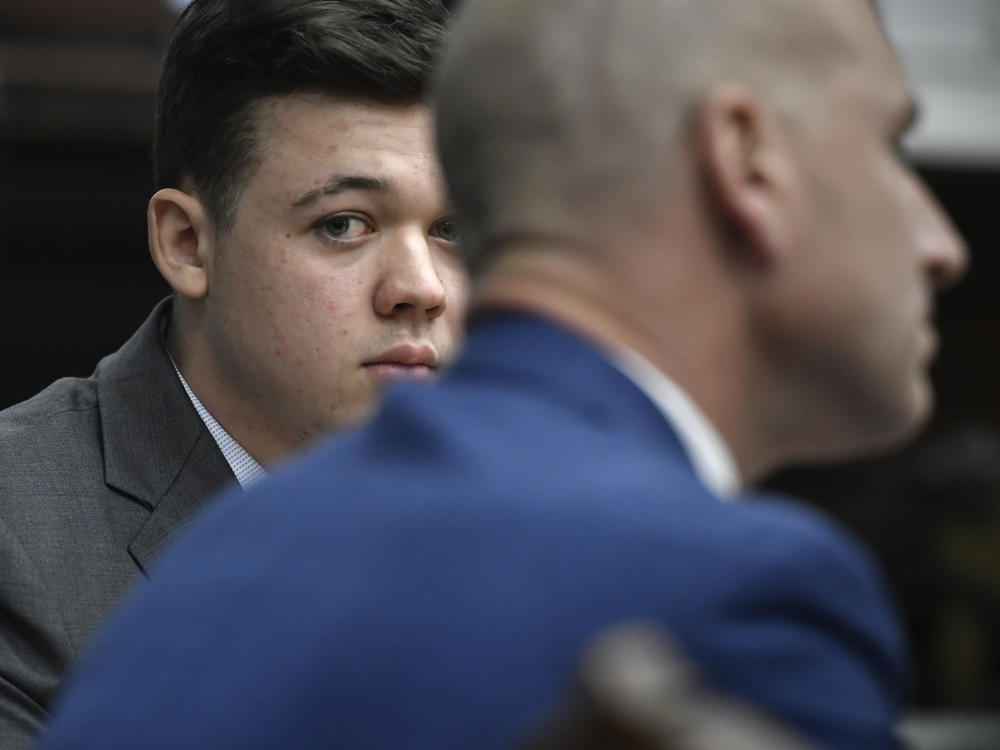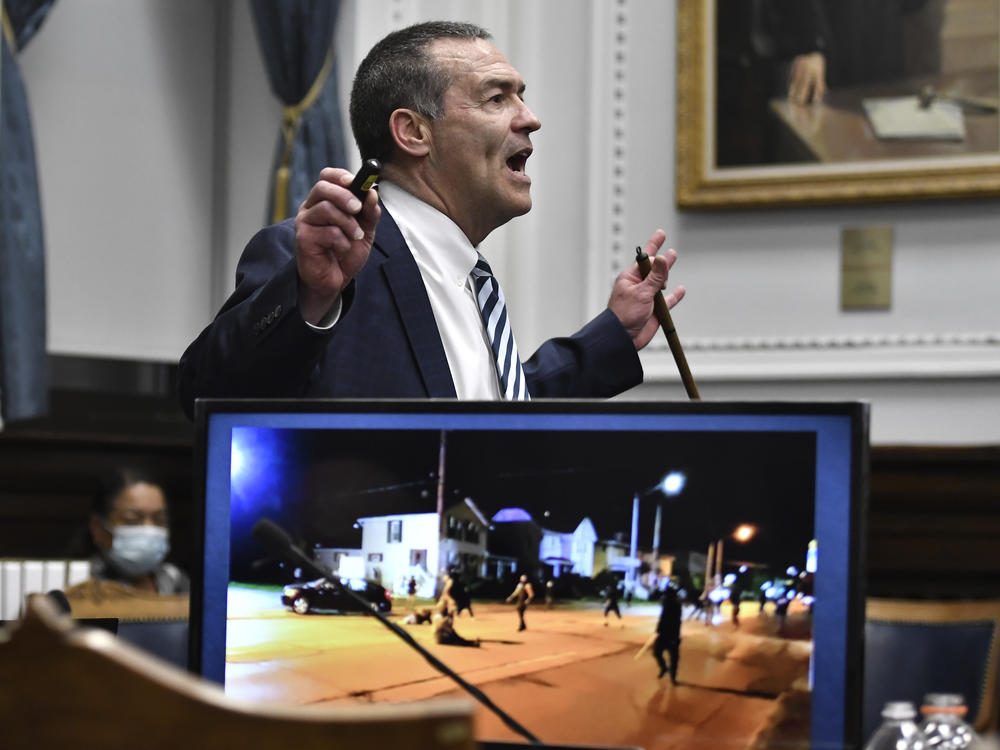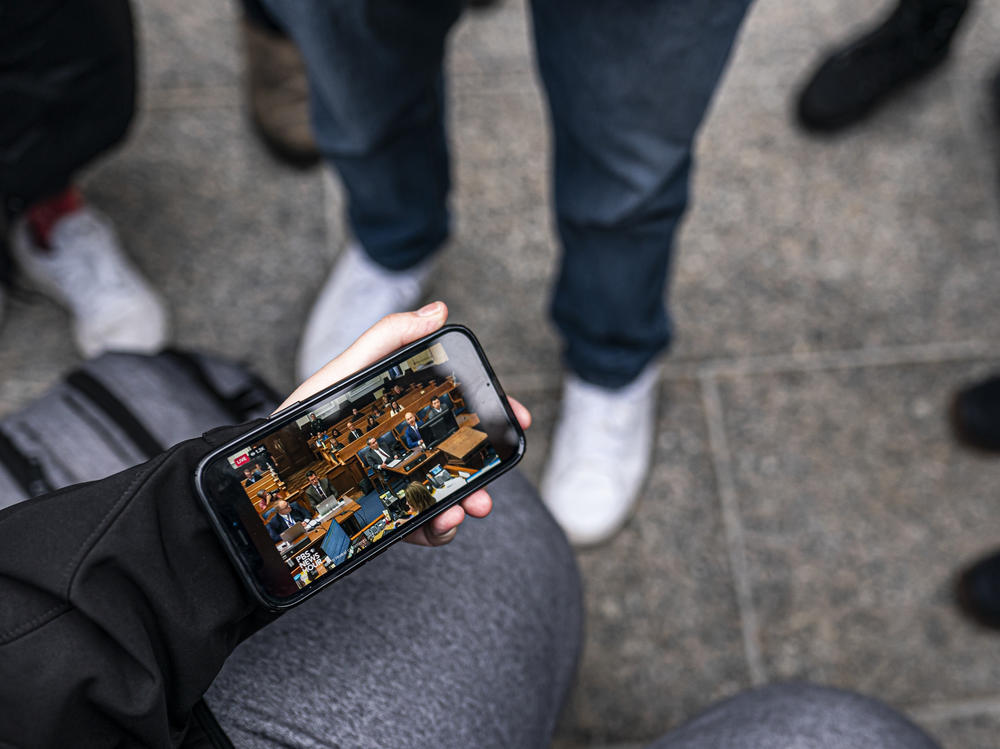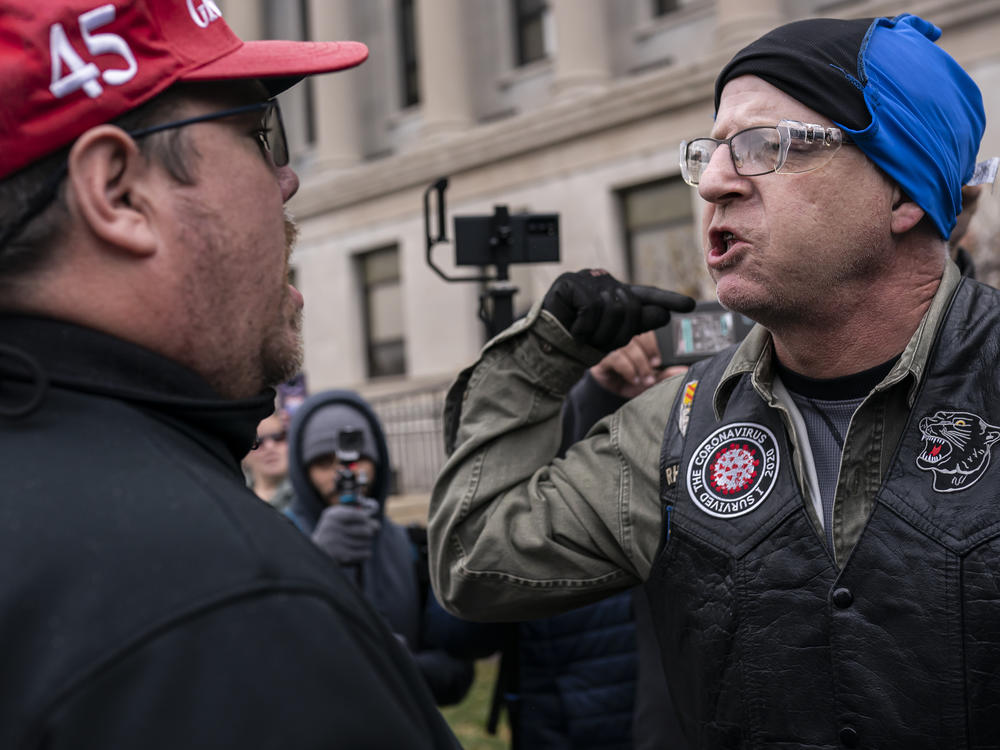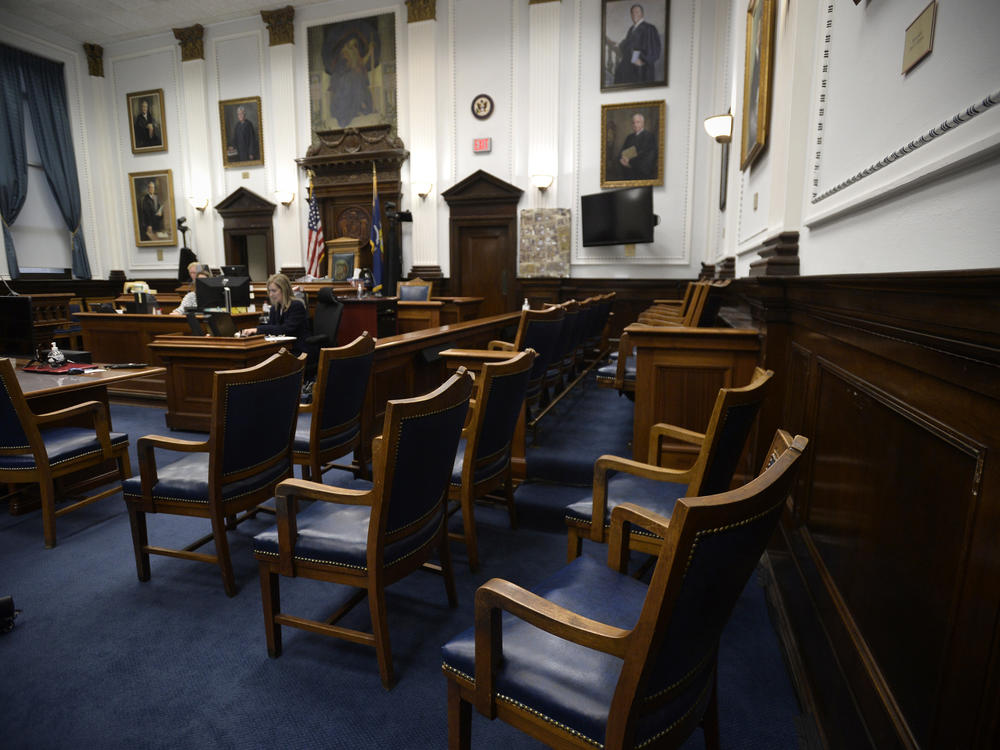Section Branding
Header Content
The Rittenhouse jurors watch video, but that can't be counted on to prevent bias
Primary Content
Ideally, the 12 men and women who serve as the jury in the Kyle Rittenhouse trial would base their final judgement solely on the evidence and testimony presented to them.
But humans don't necessarily work that way.
According to psychologists who spoke with NPR, jurors come into the courtroom with their own belief systems, experiences and identities, which all factor into how they decide on a verdict — or even what they see in a video.
"Jurors are not clean slates when they enter the courtroom," said Alexa Bankert, an assistant professor of political science at the University of Georgia. She studies the development and consequences of partisan identities. "They are people with personal and political beliefs and values, including ideology and partisanship."
For example, the racial makeup of a jury has been proven to have an impact on a case's outcome.
On Friday morning, the Rittenhouse jurors will meet for a fourth time to deliberate. They are tasked with deciding whether he acted in self-defense or whether he acted recklessly last year when he killed two protesters and wounded another in Kenosha, Wis.
Video evidence is not all it's cracked up to be
As part of the Rittenhouse trial, jurors must review several pieces of video footage.
On the second day of deliberations, the jury requested to re-watch portions of the 10 hours of videos shown over the two-week long trial. They had specifically requested, and were granted permission, to see videos taken by Gaige Grosskreutz, the man Rittenhouse shot and wounded.
For video evidence in trial, it turns out what you see is complicated.
Along with her research team, Emily Balcetis, an associate professor of psychology at New York University, studies biases in how people look at video evidence.
She said even when people look at the same photo or video, they come away with their own conclusions.
Balcetis and her research team showed people video evidence depicting two men engaged in a physical altercation. They used hidden, eye-tracking technology to record where viewers looked.
"We discovered some people looked more at one of the men than the other," she said.
This was an important development. It was evidence of how those viewers connected with one of the men in the fight with the other, she said. That connection altered how those viewers saw what was on the video.
"People who already sided with, or felt connected to, one of the defendants misremembered what he did in ways that incriminated him," Balcetis said. "They thought he was more aggressive and wrongly believed he used unwarranted force. And this happened the more they focused their visual attention on him."
Viewers can fill the gaps with their own narrative
Viewing the video evidence again doesn't necessarily mean the Rittenhouse trial jurors came away with a better understanding of what happened, Balcetis said.
"You might think that the more you look at evidence, the better you'll understand what happened. But our research finds that that is not true," she said. "Our eyes can only focus on, and process the details of a very small portion of what we actually are looking at."
That means when someone is watching one person in "a complex social scene" — like a fight — they are missing what the other person is doing even though it's visible, she said. So, to fill the gaps, the viewer constructs a narrative to help understand what is happening.
"Because we actually have seen the evidence with our very own eyes, we are confident that what we believe is true and right," Balcetis said. "We're even more certain that what we think happened is actually what happened because we saw it for ourselves. We don't realize that we only saw about half of the story."
She continued, "Even when we look again, we don't always compensate for what we missed the first time around."
None of this research is meant to excuse any one person from bearing responsibility for their actions, Balcetis notes.
It's "instead meant to help explain why any two people can watch the same video evidence and come to form such very different interpretations of what happened," she said.
Political ideology is a big factor on perception
Race, ethnicity, gender, religion, age can all have a factor in how a person perceives the world. Other aspects such as immigration status, prior experience with discrimination, education, and even parenthood can alter how people view things, too.
This is part of why consulting to advise lawyers on jury selection is a big industry, said Christopher Federico, a professor of political science and psychology at the University of Minnesota.
"We are motivated to see the world in ways that reinforce whatever our prior attitudes and beliefs are," Federico said.
Political ideology tends to make that a bit worse, according to Bankert, with the University of Georgia.
If people view the same videos of police violence against people of color, their political beliefs can strongly influence how that video is interpreted, she said.
"So in the case of Rittenhouse, a Democrat might see racially motivated murder while a Republican might see self-defense," Bankert said.
"We see this kind of partisan motivated reasoning especially for those who strongly identify with either the Democratic or the Republican Party," she said, "especially for cultural issues that are highly salient in the national debate such as racial justice but also reproductive rights and the rights of LGBTQ+."
People who are less attentive to politics tend to show weaker political biases in how they evaluate evidence, Federico said.
And some forms of evidence are harder to shape to our will, he said. "If the evidence is fairly unambiguous, it is harder for people to bend their views of it in a congenial direction."
Working around biases is possible
Just being reminded of the existence of biases and taking more time to think deliberatively can help, Federico said.
Bankert suggested people also take time to gain a new perspective: "In the case of partisanship, recent work has shown that embedding people in groups that include partisans from the opposing party can help them engage in less biased reasoning."
And juries are a form of that. Balcetis and her team told research participants to closely watch a person on video that they might not have normally paid much attention to. Just by doing this, they gained a different understanding of what happened.
"By intentionally looking at the video evidence and working to see what we don't see naturally," she said, "people can gain a new perspective on what happened and even perhaps change their opinion about who was in the right and who was in the wrong."
Copyright 2021 NPR. To see more, visit https://www.npr.org.
